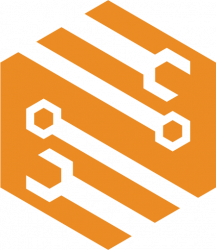We’ve just picked a laser cutter for the Nolop makerspace at Tufts. I thought it would be useful to record how we made the decision. (Spoiler: we’re getting a Universal VLS 3.60.)
The first advice I got repeatedly from every experienced makerspace manager that I talked to was that I should prioritize reliability and ease of use over cost because university makerspace users are often new to laser cutting, which means they need help a lot, and they accidentally break stuff.
There are two large categories of laser cutters you can buy: cheap lasers with glass tubes made in China (including those imported by Full Spectrum Laser and Boss Laser) and expensive lasers made in the US. The latter category consists of three companies: Epilog, Trotec, and Universal; their lasers are 2-3x more expensive than the lasers from China, but they have better customer support, and their software is not hard to use or buggy.
I surveyed my senior mechanical design class on the sizes of the parts they had cut during their college careers (mostly using the Trotec Speedy 400 laser in the mechanical engineering shop). They estimated that of the ~450 parts they had cut, only 5 were larger than 12″ x 18″. This pushed us towards the smaller, cheaper lasers, especially given that students can use the larger laser in the ME shop if they need to.
Then, I thought about optimizing for the greatest average throughput. Cutting speed is roughly linear with laser power, but less than half of the cost of a laser cutter is for the laser itself, and the cost rises less than linearly with power, at least for powers in the 10-100 W range.
We got quotes from Universal and Trotec for a few different sizes. (Epilog’s Fusion M2 series would have been in the running as well, but they’re large and thus relatively expensive.) For the smallest-bed laser that could accept a 60 W laser, this pitted the Universal VLS 3.60 at $21k against the Trotec Speedy 100 at $30k, so we opted for the Universal. The stop at 60 W was arbitrary, but getting a more powerful laser from Universal would require moving up to their PLS series of professional laser cutters.
One other feature tilted us toward Universal: the laser head has a feature where it can pop loose when someone bumps it, rather than breaking a belt or stripping a pulley.




